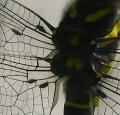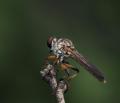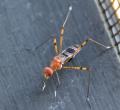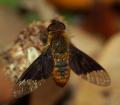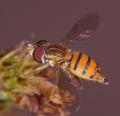Diptera.info :: Identification queries :: Diptera (adults)
Who is here? 1 guest(s)
|
Rhagionidae: Rhagio sp. (R. chrysopilaeformis?)
|
|
| ESant |
Posted on 03-02-2024 14:31
|
|
Member Location: L'Aquila, Italy Posts: 2172 Joined: 20.09.20 |
Hello, I photographed this fly near Passo San Nicolò (TN), Italy, 2200m a.s.l. on August 3rd 2023. I think it is a Rhagionidae, but is it possible to identify its genus or species from these photos? Thank you in advance, Emanuele ESant attached the following image: 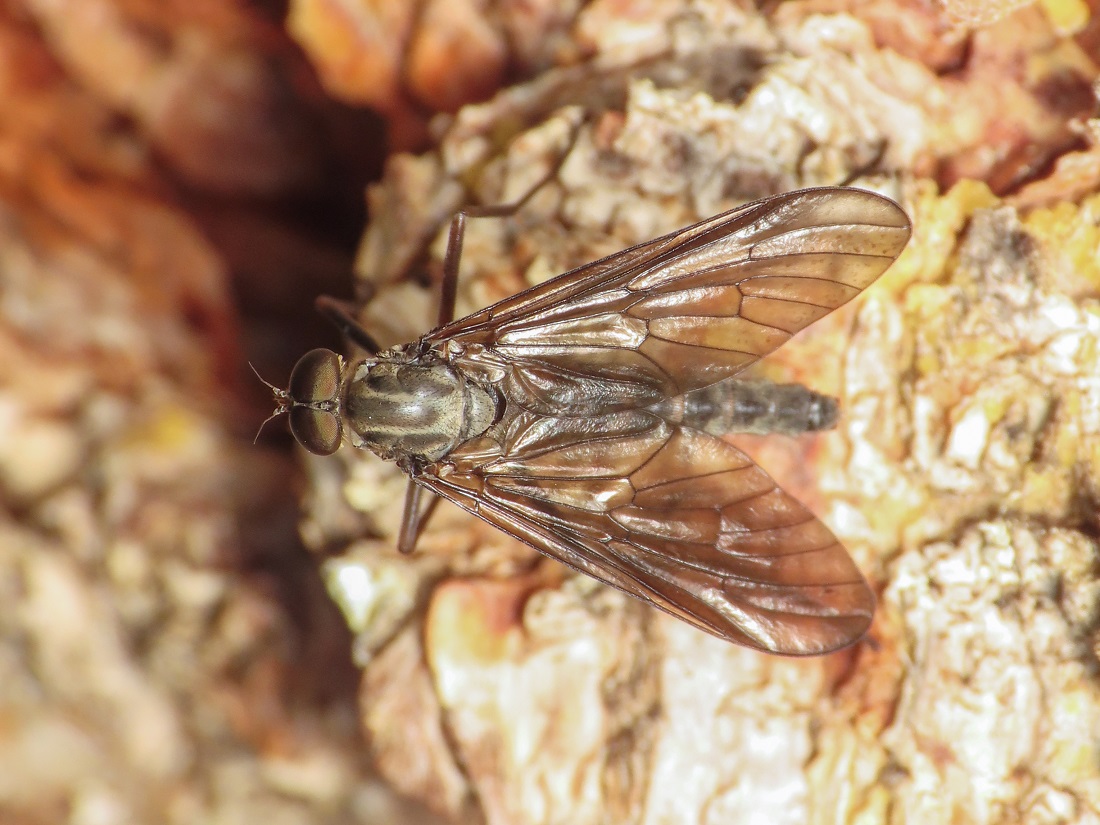 [290.37Kb] Edited by ESant on 07-02-2024 11:08 |
|
|
|
| ESant |
Posted on 03-02-2024 14:31
|
|
Member Location: L'Aquila, Italy Posts: 2172 Joined: 20.09.20 |
Photo 2:
ESant attached the following image: 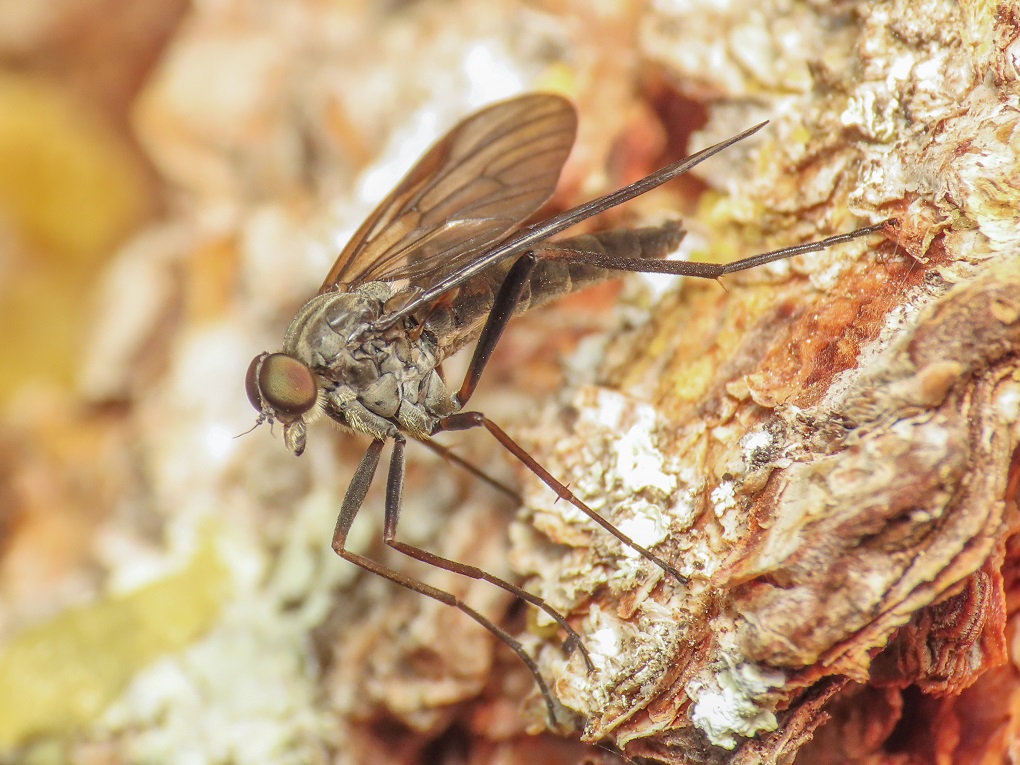 [299.12Kb] |
|
|
|
| Zeegers |
Posted on 04-02-2024 19:40
|
|
Member Location: Soest, NL Posts: 18965 Joined: 21.07.04 |
I think this might be the male of Rh. chrysopilaeformis Bezzi, which is very interesting indeed. This species is described from Abruzzo, so this locality is a bit off. And the hind tibia is predominantly dark here, whereas Bezzi states "all tibiae red". So either he made a mistake or this is something else. Types of Bezzi supposedly in Milano are not accessible ....  Theo |
|
|
|
| John Carr |
Posted on 04-02-2024 22:10
|
|
Super Administrator Location: Massachusetts, USA Posts: 10393 Joined: 22.10.10 |
Bezzi's description of Leptis chrysopilaeformis ends: "Raccolsi questa distintissima specie nella valle del Tennacola sopra Sarnano, dove pure si rinviene la L. funebris; cosa notevole però è che quest'ultima incomincia ad apparire solo verso la fine di Giugno, mentre la prima vi vola alla fine di Maggio, e più tardi non si trova." Elevation about 1,000 meters in the central Appennines in the Marche region, in May but not later. Sarnano is at 539 meters and the source of the Tennacola is at 1250 meters. Is it possible that the season of flies at 2200 meters in the Alps is two months later than c. 1000 meters in the Appennines? Edited by John Carr on 05-02-2024 00:29 |
| John Carr |
Posted on 05-02-2024 01:06
|
|
Super Administrator Location: Massachusetts, USA Posts: 10393 Joined: 22.10.10 |
Here is the rest of the description. I hope I corrected the OCR errors. If "primo" is a mistake and he meant the hind tibia, the color matches better. Leptis chrysopilaeformis n. sp. ♂ ♀ L. funebri M. affinis, sed minor, alis limpidis, palpis albohirtis, abdomine cinereo opaco, stigmate alarum valde dilutiore, pedibus denique in foemina magis luteis distinctissima. Long. corp. mm. 5-6. Nera opaca, ovunque coperta di fitto tomento cinereo. Occhi del maschio coerenti; antenne e palpi neri, questi ultimi coperti di lunghi peli bianco-argentini splendenti, con qualche rara setola nera frammezzo; tubercolo ocellare con peli neri piuttosto lunghi: peli della parte posteriore del capo sopra neri, sotto folti e bianchi; fronte della femina larga e cinerea. Torace e scudetto con lunghi peli neri, nella femina più corti e radi; peli delle metapleure pure neri; le tre strisele longitudinali oscure sono abbastanza distinte, assai più che nella funebris. Bilancieri bianchi; squame alari bianche, con peli marginali pluriseriati di ugual colore. Addome tutto coperto di tomento cenerino, ed opaco, non nero ed alquanto splendente come nella funebris; i suoi peli sono piuttosto abbondanti, lunghi e bianchi come in quella; anche nella femina è colorato come nel maschio, solo i peli bianchi sono meno abbondanti e più corti; le due lamelle apicali dell'ovopositore sono rivolte in fuori e nere. Ali appena cenerognole, e quindi assai più chiare che nella funebris; lo stigma è appena accennato da una macchia allungata gialliccia. Anche e trocanteri neri con tomento cenerino; le prime hanno lunghi peli senza eccezione bianchi; anche i peli dei femori sono bianchi. Nel maschio i femori sono tutti neri, meno l'estremo apice che è giallo; le tibie gialle, annerite all'apice, sopratutto quelle del primo paio; tarsi del primo paio tutti neri, quelli del secondo e terzo gialli alla base. Nella femmina i femori sono gialli, quelli del primo e terzo paio con largo anello fosco nel mezzo ; tibie gialle, o le anteriori infoscate all'apice. |
| Zeegers |
Posted on 06-02-2024 16:45
|
|
Member Location: Soest, NL Posts: 18965 Joined: 21.07.04 |
@John: yes, the difference in altitude might explains the difference in period of flight. Still, the pattern of Italian Abruzzo endemic reaching north to the Alps is pretty unusual .... and in Spain we found in similar conditions a spec.nov. (Rh. aterrima Zeegers @ Alvarez Fidalgo), ... so without specimen collected and without somebody checking the Bezzi type .... |
|
|
|
| ESant |
Posted on 07-02-2024 11:08
|
|
Member Location: L'Aquila, Italy Posts: 2172 Joined: 20.09.20 |
I'm sorry for the late reply, and thank you both very much for your comments! Looking at the description, it seems to match quite well, but as it was already pointed out, the distribution is unusual. I doubt I'll have much time at the end of May, but if I happen to get the chance, I can try to look for some specimens of the actual R. chrysopilaeformis in Valle del Tennacola (now called Valle dei Tre Santi, if I'm not mistaken). I'm sure it'll make comparisons easier. |
|
|
|
| Zeegers |
Posted on 08-02-2024 20:29
|
|
Member Location: Soest, NL Posts: 18965 Joined: 21.07.04 |
Great. If you are ever in Milano, please do try to check the type…. Theo |
|
|
|
| Jump to Forum: |


